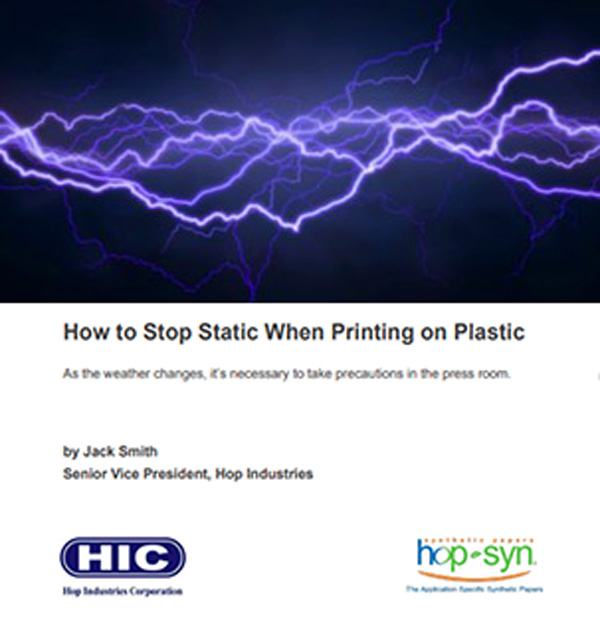 As the weather changes, so does the need to make adjustments in the press room. In this newest report, Jack Smith of Hop Industries provides helpful information to print service providers to avoid the challenges of static when printing on plastic, especially as the seasons change. The report also explains the differences between plastic substrates, and which ones are more prone to static. Call us at 800-524-0757 or visit us online to request a free copy of the report, “How to Stop Static When Printing on Plastic.”
As the weather changes, so does the need to make adjustments in the press room. In this newest report, Jack Smith of Hop Industries provides helpful information to print service providers to avoid the challenges of static when printing on plastic, especially as the seasons change. The report also explains the differences between plastic substrates, and which ones are more prone to static. Call us at 800-524-0757 or visit us online to request a free copy of the report, “How to Stop Static When Printing on Plastic.”
The free report highlights the causes and effect of static in the pressroom, such as double feeding and slower drying, if left untreated. The report also provides a selection of useful anti-static tools.
“Our newest how-to report is a useful resource to help print service providers maintain optimal production conditions, especially as the weather changes,” comments Jack Smith, Senior Vice President of Hop Industries. “Choosing the right plastic substrate is also important, and Hop-Syn’s minimal static-causing properties makes it one of the easiest to print.”
Not all Plastics are Created Equal
In addition to learning new ways to reduce static in the press room, the how-to report also compares print production speeds of different plastics; Hop-Syn customers are able to produce an average of 15% to 20% more impressions than alternate plastics. Hop-Syn customers also experience less static than alternative plastics because of its uniform gauge thickness and unique clay-filled polypropylene construction, which makes the surface more absorbent for quick drying.
For questions or more information visit www.hopsyn.com or call 800-524-0757.